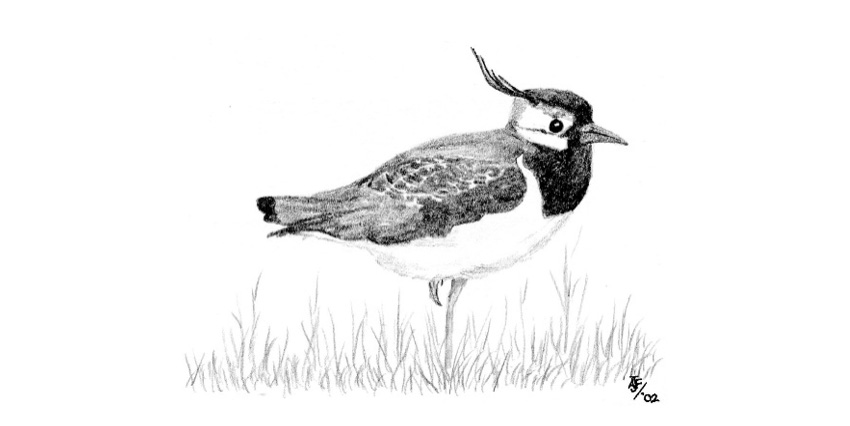Passage migrant and winter visitor, and scarce breeding resident.

Sage (1959) described Lapwings as, “common in the Stevenage area”, they have since declined considerably as a breeding species due to the development of the town. They have also declined nationally by 43% since 1995 due to changes in farming practices such as the change from spring to autumn grown cereal crops, mechanised cultivation, chemical spraying and the reduction of pasture.
The 1973 Breeding Atlas confirmed breeding from six of the Stevenage’s tetrads, the 1992 Atlas from one. No confirmed breeding was recorded by the 2012 Atlas, with only probable breeding recorded from one tetrad (Norton Green).
The 2012 Winter Atlas confirmed their presence from the tetrads covering Chesfield Park and, Boxbury Farm.
Large numbers of Lapwings used to be found at Norton Green Tip, where they also bred. 200 were seen there on 1 March 1974, 300 on 7 December 1998 and 100 on 10 December 2004. The largest flock since 2004 is of 38 on 18 November 2014. In 1989 ten breeding pairs were recorded. A chick raised at Norton Green and ringed on 2 May 1985 was found dead at Cleder, Finistere, France on 18 March 1986, 454 Kilometres south west of the nest site. Ploughing of a set-aside field next to Norton Green Tip in early May 2018 wrecked a breeding attempt.
Lapwings were more commonly seen on autumn migration and in the winter, when they formed large flocks, such a flock used to be found in the Watton Road area between Bragbury End and Knebworth, where between 200 and 250 were seen on 24 October 1978. Other large flocks recorded are: 200 between Knebworth, Datchworth and Bragbury End during the winter of 1941/42; 100 to 200 near Box Wood between 12 and 19 August 1965; 100 near Box Wood on 10 October 1965; c.150 at Astonbury on 19 November 1972; up to 100 at Astonbury and Bragbury End in January 1973; 200 to 300 Coreys Mill on 27 December 1974; 380 near Astonbury on 19 January 1975; 200 at Coreys Mill in November and December 1976; 220 at Astonbury on 5 February 1978; 200 at Astonbury on 17 December 1978; 400 at Coreys Mill in October 1979; 120+ Norton Green area on 15 March 1980; 200+ Aston End September 1980.
Away from the rural edges of the Stevenage, they have in the past been seen at King George’s Playing Fields in winter, and in the fields of the sites of Angotts Mead and, Woolenwick School in the late 1940’s. 10 were seen at Fairlands Valley Lakes in the early morning of 25 January 1994, and a flock of 60 were seen passing over there on 23 October 2004. In 1983 a small flock was seen on a flooded piece of ground that is now the site of the Range and Wicks Stores in Broadhall Way.
The most recent records from Stevenage are: one flying over Fairlands Valley Lakes on 9 October 2021; one at Potters Spring on 12 April 2022; one at Fairlands Valley Lakes on 19 October 2022; 50+ flying west over Chells/Shephall on 18 December 2022; one near Astonbury on 31 May 2023; three flying over Fairlands Valley Lakes on 26 June 2024; one at Fairlands Valley Lakes on 30 July 2024.
.
